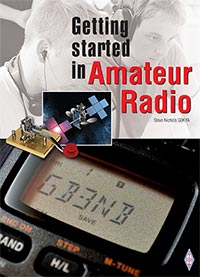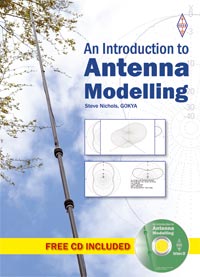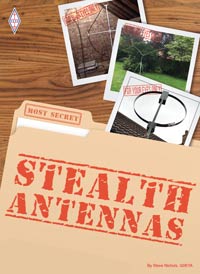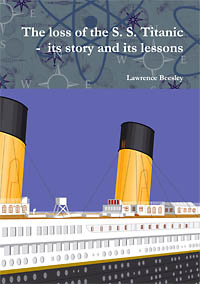 |
| Click to view larger image |
I was walking around
a local shop recently when I spotted a range of mints in tins from a
company called Stewarts.
They are very attractive and feature paintings of a Supermarine Spitfire, a steam locomotive and a Triumph motorcycle.
They are very attractive and feature paintings of a Supermarine Spitfire, a steam locomotive and a Triumph motorcycle.
The Spitfire (QJ-K)
actually
has quite a history to it.
At just £2.99 each
the tins are cheap and cheerful, and I knew just what I wanted to do with
one!
Hence, the plans for
a 20m Rockmite ][ transceiver were born.
I have built a 40m
Rockmite v1 before, which is a crystal-controlled ham radio
transceiver offering about 0.5W output on two very close frequencies –
you select each one by pressing a button. The Rockmite also has a built-in CW keyer with a speed control and is a very simple, but well-respected
little radio.
The joy is they will
fit in a mint tin, such as the famous Altoids. But the Stewart tins
are much more attractive.
So, I ordered a 20m
Rockmite ][ from Kanga kits (www.kanga-products.co.uk)
in the UK (they are actually made by Rex Harper of QRPme.com
in the US) and it arrived the next day.
The box is easy to
work on as the material is very thin. I carefully took the lid off
while I was working on it and wrapped the rest in masking tape to
protect it and allow me to drill the holes. Quick tip – run a
pencil around the lid when it is closed so that you can see on the
tape where the lid will be when it is assembled. You can then measure
and drill the holes for the antenna jack, power, key, headphones and
frequency switch knowing that they won't bind on the lid.
 |
| Click to view larger image |
I used a sharp, new
2.5mm drill for all the holes after marking them with a centre punch
first. I then used a Dremel tool and needle files to open up the
holes to the size needed. With hindsight I would have moved the PCB a
little closer to the antenna side of the box to give more room, but I
have now managed to put it all together.
The PCB build was
simple, but I did end up with some spare components, which worried
me! I didn't miss anything, so I thought they must be spares.
I also had to modify the layout by cutting a track and adding a resistor, but that was easy.
Dennis G6YBC of Kanga subsequently emailed and said: "Apologies if the spare parts (bits left over) confused you. I enclose all parts to complete the Rockmite ][ in either of ways that Rex explains i.e. with volume and speed control etc.
"This includes extra resistors for the various mods that he and Chuck have published. This includes the 3866 and 2N2222 transistors. All the above parts are part of the BOM as per the build instructions for Ver 3, but you also have to read the other sheets Rex publishes on his website."
I also had to modify the layout by cutting a track and adding a resistor, but that was easy.
I had the choice of
a 2N2222A (TO-18) transistor or a 2N3866 (TO-5). I chose the latter as
I presumed it would give a higher output – wrong, as we'll see
later!
I also swapped the
BNC for a phono socket to match the Mountain Topper Radio (MTR) I also
have, which I have written about before.
By soldering on all
the connectors I was able to test if on the bench first before boxing
to make sure everything worked, which it did (that's unusual for me).
Powering up the the
Rockmite gives a “73” in CW through the headphones, which is a
nice touch. You can switch to a straight key by holding down one of
the paddles or the key on power up. You can also change the speed by
holding the button down for more than half a second and then using
either paddle to speed it up or slow it down – the speed in WPM is
enunciated in CW.
The first tests were
a little disappointing as summer afternoons are not the best for 20m.
But the evening and next morning showed the little receiver is very
lively, picking up stations in the US, Switzerland, Germany, Czech
Republic and others with a dipole at about 25ft.
The rig is actually
on 14.0604MHZ and 14.0598MHz as far as I can see.
So does it transmit?
Yes, but only about 200-250mW with a 12.4V supply. I think the output
can be tweaked a little higher, say 500-700mW by reducing the value
of the R18 resistor, but I need to check on that.
Needless to say, I
haven't managed to work anyone on it yet – it is a little too QRPP
for me! I was picked via the reverse beacon network in Germany and Ireland though.
Update 10th July 2015
I put a quick CQ out last night and was picked up on the VE2WU skimmer in Quebec. That's pretty impressive!
Update 30th November 2015
I replaced R18 with a 3 Ohm resistor and replaced the output transistor with a 2N5109 and am now getting 500mW. Happy with that













Hi Steve,
ReplyDeleteI find that the choice of tin /enclosure for a kit like the Rockmite is just as important as building the kit itself. Nice article. I built my 20M Rockmite in a Kiwi shoe polish tin. It can be seen on my QRZ page. Cheers de Scott ve3vvf